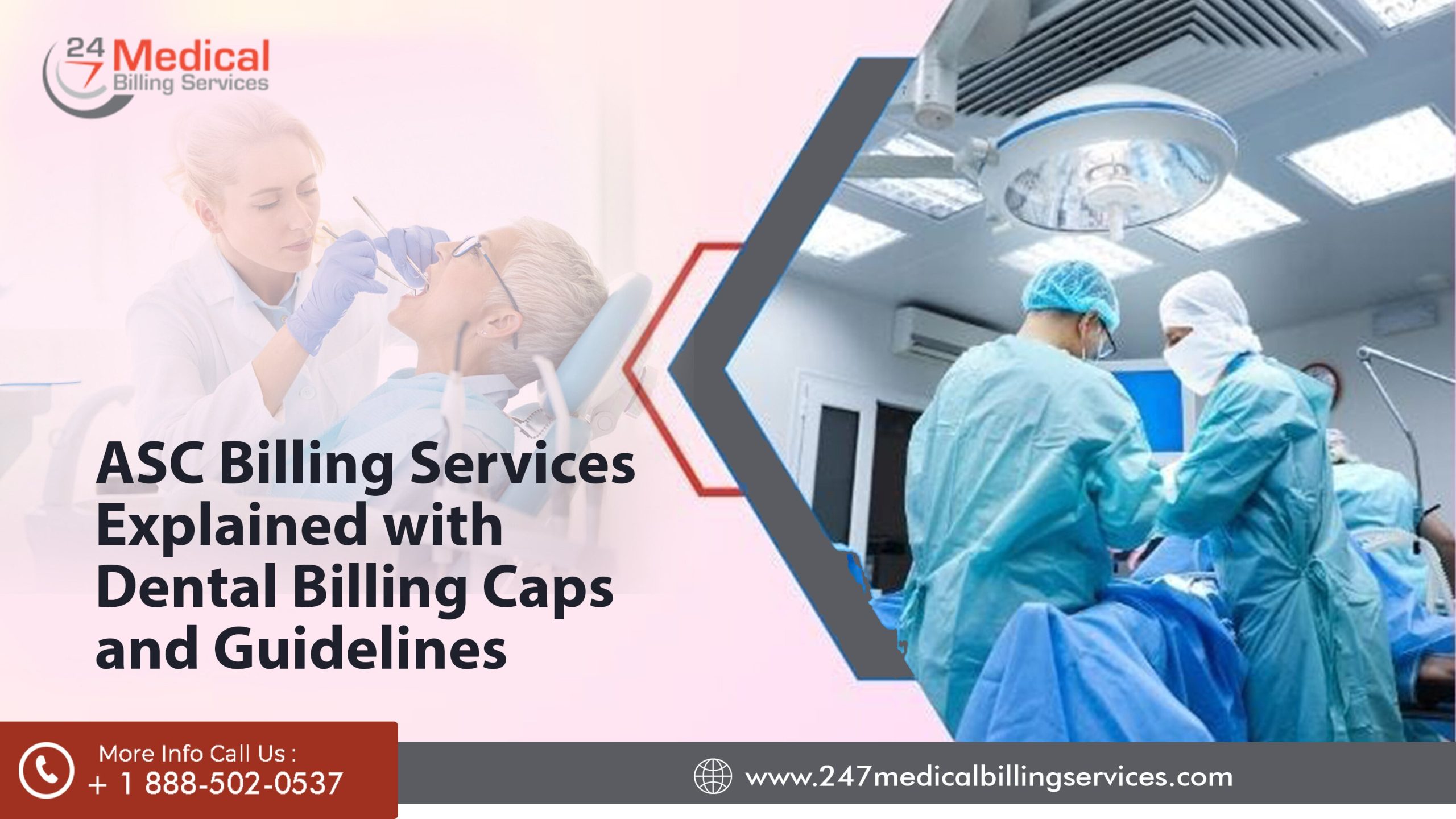
ASC Billing Services Explained with Dental Billing Caps and Guidelines
Ambulatory Surgical Centers (ASCs) are specialized healthcare facilities that provide surgical services to patients who do not require hospital admission. These centers are equipped to perform a variety of surgeries, including dental procedures, on an outpatient basis. In fact, billing for all these services, particularly dental procedures, requires careful attention to detail to ensure proper reimbursement. This guide delves into the complexities of ASC billing services, focusing on dental billing caps and guidelines that help streamline the billing process.
Key Dental Procedures and Their Codes
Several common dental procedures may be performed in ASCs, each with specific CDT codes that must be used for billing. Below are some of the most frequently performed periodontal surgical procedures and their corresponding codes:
- Gingiv0 ectomy/Gingivoplasty:
- D4210: Four or more contiguous teeth or tooth-bounded spaces per quadrant.
- D4211: One to three contiguous teeth or tooth-bounded spaces per quadrant.
- D4212: To allow access for restorative procedure per tooth.
- Dental Crown Lengthening:
- D4230: Anatomical crown exposure – four or more contiguous teeth or bounded tooth spaces per quadrant.
- D4231: Anatomical crown exposure – one to three teeth or bounded tooth spaces per quadrant.
- D4249: Clinical crown lengthening – hard tissue.
- Gingival Flap:
- D4240: Gingival flap procedure, including root planing – four or more contiguous teeth or tooth-bounded spaces per quadrant.
- D4241: Gingival flap procedure, including root planing – one to three contiguous teeth or tooth-bounded spaces per quadrant.
- D4245: Apically positioned flap.
- Osseous Surgery (Flap Debridement):
- D4260: Including flap entry and closure – four or more contiguous teeth or tooth-bounded spaces per quadrant.
- D4261: Including flap entry and closure – one to three contiguous teeth or tooth-bounded spaces per quadrant.
Dental Billing Caps and Guidelines
When billing for dental procedures in an ASC, understanding the billing caps and guidelines set by insurance companies is crucial. These caps are limits imposed on the amount that can be billed for specific procedures, and they vary depending on the payer and the procedure involved.
- Bundling and Unbundling of Services: Insurance companies often require that certain services be bundled together for billing purposes. For example, in periodontal flap surgery, the costs associated with the flap creation, root planing, and regenerative procedures might need to be bundled under a single code. Failure to bundle services as required can lead to claim denials.
- Reimbursement Caps: Each insurance provider has its own set of reimbursement caps, which are the maximum amounts they will pay for specific procedures. These caps are usually based on the ASC's geographical location and the procedure's complexity. For instance, a gingivectomy might have a higher reimbursement cap in a metropolitan area than a rural one.
- Frequency Limitations: Some dental procedures are subject to frequency limitations, meaning they can only be billed once within a specific time frame. For example, periodontal maintenance (D4910) is often limited to being reimbursed only within 2 to 12 months of scaling and root planing (SRP). Understanding these limitations is essential to avoid denied claims.
- Documentation Requirements: Proper documentation is critical in the ASC billing process. Each claim should include comprehensive treatment notes, diagnostic reports, and any other supporting documents the payer requires. Missing or incomplete documentation is one of the leading causes of claim denials.
- Coordination of Benefits: Patients with dual dental insurance coverage must submit their claims to the primary insurer first. Once the primary insurer has processed the claim, the Explanation of Benefits (EOB) should be reviewed to determine the remaining balance. This balance can then be submitted to the secondary insurer. Adhering to each payer’s submission requirements is critical to avoiding delays or denials.
Tips for Maximizing Reimbursement in ASC Dental Billing
To ensure that your ASC maximizes reimbursement for dental procedures, follow these best practices:
- Know Your Payers: Familiarize yourself with the specific rules and regulations of each insurance provider you work with. Understanding their covered services, fee schedules, and limitations will help avoid common billing pitfalls.
- Stay Current on Coding Changes: The American Dental Association (ADA) annually updates CDT codes and guidelines. Staying up-to-date with these changes will help you avoid using outdated codes, which can lead to claim denials.
- Invest in Training: Continuous training for billing staff is essential. They should be well-versed in dental and medical coding and the complexities of ASC billing. This will help ensure that claims are submitted accurately and efficiently.
- Partner with Experts: Consider partnering with an experienced dental billing company, such as 24/7 Medical Billing Services, specializing in ASC billing. These experts can help streamline your billing processes, reduce the risk of claim denials, and ultimately improve your revenue cycle management.
Conclusion
ASC billing for dental procedures is a complex process that requires a deep understanding of coding, billing caps, and insurance guidelines. By following the tips outlined in this guide and staying informed about the latest updates in dental coding, ASCs can optimize their billing processes and maximize reimbursement. Also, partnering with experienced billing professionals such as 24/7 Medical Billing Services can play a crucial role in ensuring the financial health of your ASC.


.png)
